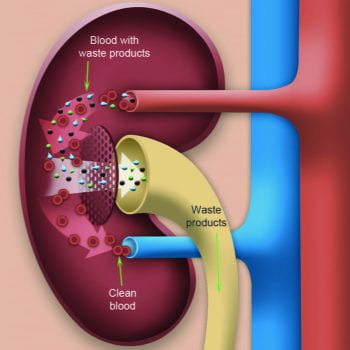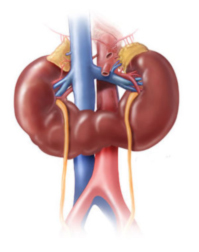What does the kidney do?

Kidneys are organs with many functions. One responsibility the kidneys have is controlling the levels of water and minerals in the blood. To do this, the kidneys produce urine that then travels to the bladder through tubes known as ureters.
Source: https://kidney.wustl.edu/kidney-diseases/
How are kidney stones removed?
As kidney stone surgeons, we are often interested in how we will get access to the kidney stone to break it up and remove it. We can make a tiny hole through the skin into the kidney to find your kidney stones. This is done through either the top, middle, or bottom of the kidney. Sometimes we need more than one hole to get all the stones out.
What is a horseshoe kidney?

Horseshoe kidneys are only seen in one in every one-thousand people. The characteristic horseshoe shape usually occurs because the bottom part of the two kidneys fuse together and form a bridge that we surgeons call the isthmus.
Source: https://anatomy-library.com/img/anatomy-horseshoe-kidney-31.html
How is stone surgery done in horseshoe kidneys?
For many decades, surgeons have used x-ray images to guide access into the top part of the horseshoe kidney. Our stone center is changing the field by using ultrasound to guide access. Unlike x-ray, this is radiation-free and allows us to gain access to the middle part of the kidney. These innovations will make horseshoe kidney surgery easier and safer for patients.
Manuel Armas-Phan BS, David Bayne MD, and Thomas Chi MD